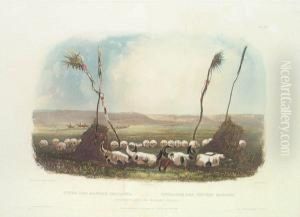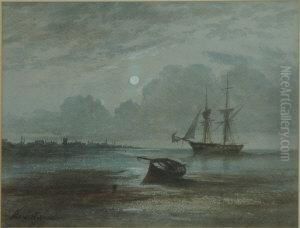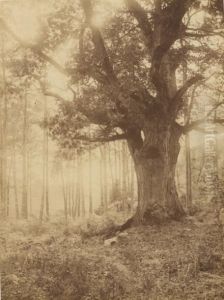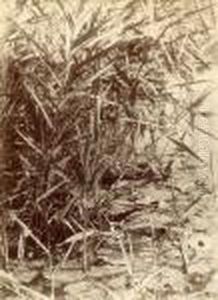Charles Bodmer Paintings
Karl Bodmer, known as Charles Bodmer in the English-speaking world, was a Swiss-French printmaker, painter, and illustrator known for his detailed illustrations of the American West. Born on February 11, 1809, in Zurich, Switzerland, Bodmer was interested in art from a young age and received his initial training in his native city. His early works consisted mainly of lithographs that depicted European landscapes and scenes.
In 1832, Bodmer was hired by German Prince Maximilian of Wied-Neuwied to accompany him on an expedition to North America. The purpose of the journey was to study the native tribes and wildlife along the Missouri River. During this trip, which lasted from 1832 to 1834, Bodmer meticulously documented the landscapes, native peoples, flora, and fauna they encountered with his watercolors and sketches. These works are highly valued for their ethnographic accuracy and artistic quality, providing a rare, detailed look at the American frontier before the large-scale impact of European settlement.
Upon his return to Europe, Bodmer worked with the Prince to turn his watercolors into a series of aquatint engravings, which were published in Maximilian's book, 'Travels in the Interior of North America, during the years 1832–1834.' This book and the accompanying illustrations were critically acclaimed and remain an important historical record.
Although Bodmer's journey to the American West is his most famous work, he continued his artistic career in Europe. After the North American trip, he moved to France, where he spent most of his life. He continued to work in various media, including oil painting, but he never achieved the same level of fame as he did with his American illustrations. Bodmer died on October 30, 1893, in Barbizon, France.
Bodmer's legacy is particularly notable in the United States, where his works provide an invaluable visual record of a pivotal period in American history. His detailed and sympathetic portrayal of the indigenous peoples of the Upper Missouri region, in particular, is one of the most significant contributions to the visual anthropology of the nineteenth century.




